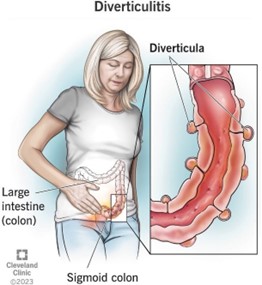A nurse is reinforcing teaching about preventing long-term complications of retinopathy and neuropathy with an older adult client who has diabetes mellitus. Which of the following actions is the most important for the nurse to include in the teaching?
“Wear closed-toed shoes daily.”
“Maintain stable blood glucose levels.”
“Plan to have an eye examination once per year.”
“Examine your feet carefully every day.”
The Correct Answer is B
Choice A reason: Wearing closed-toed shoes daily is a good practice for people with diabetes, as it can protect the feet from injuries and infections. However, it is not the most important action for preventing long-term complications of retinopathy and neuropathy. These complications are mainly caused by high blood glucose levels that damage the blood vessels and nerves in the eyes and feet.
Choice B reason: Maintaining stable blood glucose levels is the most important action for preventing long-term complications of retinopathy and neuropathy. High blood glucose levels can cause oxidative stress, inflammation, and endothelial dysfunction, which impair the blood flow and oxygen delivery to the eyes and feet. This can lead to nerve damage (neuropathy) and vision loss (retinopathy) over time. Keeping blood glucose levels within the target range can reduce the risk of these complications and slow down their progression if they already exist.
Choice C reason: Planning to have an eye examination once per year is a recommended action for people with diabetes, as it can help detect and treat retinopathy before it causes irreversible damage to the retina. However, it is not the most important action for preventing long-term complications of retinopathy and neuropathy. Eye examinations cannot prevent retinopathy from occurring or worsening; they can only monitor its status and provide appropriate interventions.
Choice D reason: Examining your feet carefully every day is another recommended action for people with diabetes, as it can help identify and treat any signs of neuropathy, such as numbness, tingling, pain, or ulcers. However, it is not the most important action for preventing long-term complications of retinopathy and neuropathy. Foot examinations cannot prevent neuropathy from occurring or worsening; they can only monitor its status and provide appropriate care.

Nursing Test Bank
Naxlex Comprehensive Predictor Exams
Related Questions
Correct Answer is A
Explanation
Choice A reason: Roast chicken with white rice is a low-fiber, easy-to-digest meal that is suitable for a client who has recovered from the acute phase of diverticulitis. A low-fiber diet can help reduce the stress on the colon and allow it to heal. White rice is a refined grain that has less fiber than whole grains, such as brown rice or quinoa12.
Choice B reason: A poached egg with sliced tomatoes is not a good choice for a client who has recovered from the acute phase of diverticulitis. Although eggs are a good source of protein and do not contain fiber, tomatoes are high in fiber and may irritate the colon. Tomatoes also have seeds, which were previously thought to cause problems for people with diverticular disease, but there is no evidence to support this. However, some people may still find them uncomfortable to eat13.
Choice C reason: Bean soup with steamed broccoli is not a good choice for a client who has recovered from the acute phase of diverticulitis. Beans and broccoli are both high in fiber and may cause gas, bloating, and cramping in the colon. A high-fiber diet is recommended for people with diverticulosis (the presence of pouches without inflammation) to prevent constipation and diverticulitis, but it should be avoided during or shortly after an episode of diverticulitis12.
Choice D reason: Ham sandwich on white bread is not a good choice for a client who has recovered from the acute phase of diverticulitis. Although white bread is low in fiber, ham is a processed meat that may increase the risk of developing diverticular disease. Research suggests that a diet high in red meat and processed meat may contribute to inflammation and infection of the pouches in the colon.

Correct Answer is ["A","B","C"]
Explanation
Choice A reason: Tachycardia is a common symptom of hypoglycemia, as the body releases adrenaline and other hormones to raise the blood sugar level. This can cause the heart to beat faster and stronger.
Choice B reason: Blurry vision is a common symptom of hypoglycemia, as low blood sugar can affect the ability of the eyes to focus and see clearly. This can also cause headaches, dizziness, or double vision.
Choice C reason: Sweating is a common symptom of hypoglycemia, as the body tries to cool down and cope with the stress of low blood sugar. This can also cause shakiness, trembling, or tingling in the lips, tongue, or cheek.
Choice D reason: Polydipsia (excessive thirst) is not a symptom of hypoglycemia, but a symptom of hyperglycemia (high blood sugar). High blood sugar can cause dehydration and dry mouth, which make the person feel thirsty.
Choice E reason: Polyuria (excessive urination) is not a symptom of hypoglycemia, but a symptom of hyperglycemia (high blood sugar). High blood sugar can cause the kidneys to filter out excess glucose and water from the blood, which make the person urinate more often.
Whether you are a student looking to ace your exams or a practicing nurse seeking to enhance your expertise , our nursing education contents will empower you with the confidence and competence to make a difference in the lives of patients and become a respected leader in the healthcare field.
Visit Naxlex, invest in your future and unlock endless possibilities with our unparalleled nursing education contents today
Report Wrong Answer on the Current Question
Do you disagree with the answer? If yes, what is your expected answer? Explain.
Kindly be descriptive with the issue you are facing.
